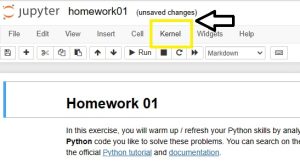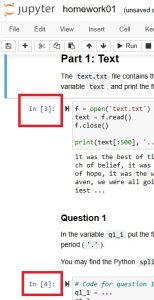Due: Wednesday, 4/26
Form to opt-in for comments/feedback on report/video
General Directions
The project video presentation is intended to provide a high-level overview of your project to an audience of your peers (that is, individuals who have a reasonable knowledge of data science but are not experts in your particular project topic). Presentation recordings will be made available to the entire class (through Sakai, so not available outside of the class). The presentation should demonstrate your ability to communicate the significance and interpret the findings of your research project. The presentation should stand on its own so that it makes sense to someone who has not read your proposal or prototype.
Your group should create a video recording of your presentation in which every group member speaks and in which you use a visual aid such as presentation slides. The easiest way to do this is to simply hold a zoom call with all members of your project group, share your screen with your presentation slides, and record either locally or to the cloud (see Zoom recording help information). If this is not possible, you can also record portions individually and combine the recordings (though this will require additional editing work). In the end, we will ask for a URL to your complete recording, so you can either provide a share link to a zoom cloud recording or you can record locally and then upload your recording to Duke Box, Warpwire, or any other cloud platform that we can access such that we can view your recording directly online (we should not need to download to view the recording). Ensure that anyone with the link can view the recording.
In terms of length, the presentation should be between 8 and 12 minutes. You can have as many slides as are necessary, but a typical pace has 1-2 slides per minute, so 8-24 slides total would be reasonable. Your slides should prioritize well-labeled figures or visualizations and use text sparingly to emphasize important points. The text should also be large enough that it is reasonably easy to read. When you are finished, you will submit a pdf of your slides to Gradescope under the assignment “Project Video Presentation.” Be sure to include your names and NetIDs in your final document and use the group submission feature on Gradescope. Your first slide should include the URL where we can view the recording of your presentation.
Grading
- E (Exemplary, 10pts) – Video presentation is between 8 and 12 minutes.
- S (Satisfactory, 9 pts) – Video presentation is over 12 minutes.
- N (Not yet, 6pts) – Video presentation does not reach 8 minutes.
- U (Unassessable, 2pts) – Video presentation is missing or does not demonstrate meaningful effort.
Part 0: Title Slide
The very first slide of your presentation should be a title slide containing at least the below information. It does not need to be in the actual video recording.
- A descriptive title of your project/presentation, not “CS216 Presentation Video”
- Names of all group members
- URL to the video recording of your presentation
Grading
- E (Exemplary, 10pts) – Work that meets all requirements.
- N (Not yet, 6pts) – Does not meet all requirements.
Part 1: Introduction and Research Questions
Your presentation should begin by introducing your topic generally and posing your research questions. Provide some explanation of the relevance or motivation of your research questions.
Grading
- E (Exemplary, 20pts) – General introduction to topic and clearly defined research questions and their motivations.
- S (Satisfactory, 19pts) – General introduction to topic and clearly defined research questions. Discussion of motivations may be missing.
- N (Not yet, 12pts) – General introduction to topic. Research questions and motivations are not clearly defined.
- U (Unassessable, 4pts) – Introduction and research questions are missing or do not demonstrate meaningful effort.
Part 2: Data Sources
Discuss the data you collected and used to answer your research questions. Be specific: name the datasets you are using, the information they contain, and where they were collected from/how they were prepared.
Grading
- E (Exemplary, 20pts) – Origins of data are properly specified, cited, and include discussion of what information they contain. Any relevant data wrangling, cleaning, or other data preparation is explained.
- S (Satisfactory, 19pts) – Origins of data are properly specified, cited, and include discussion of what information they contain. Any relevant data wrangling, cleaning, or other data preparation may be missing or could be improved.
- N (Not yet, 12pts) – Poorly specified data sources and lack of discussion of preparing the dataset.
- U (Unassessable, 4pts) – Discussion of data sources and data preparation are missing or do not demonstrate meaningful effort.
Part 3: Results
Describe your results. Where possible, provide well-labeled and legible charts/figures in your slides to summarize results instead of verbose text. Interpret the results in the context of your research questions. It may not be possible to describe every individual result from your project in a brief amount of time. Focus on the most important and essential results for addressing your research questions. Please note that a screenshot of your dataset does not count as a table or figure and should not be included in your video presentation.
Unlike your final report, it is not generally possible to describe your methods in sufficient detail in a short presentation so that an informed audience member could reproduce your results. Instead, you should focus on your results and their interpretation, and only discuss methods at a high level such as may be necessary to interpret the results.
Example of Interpreting results
Do not: “When we conducted our hypothesis test, we found that p < 0.05, so our results are significant.”
Do: “Since our p-value is significant, we could determine that generation 1 pokemon have a different popularity than all other pokemon. And since the mean popularity of generation 1 is higher than the mean of all the other pokemon, we can conclude that generation 1 is on average more popular.” [The slide shows the p-value]
Grading
- E (Exemplary, 20pts) – Most important and essential results are thoroughly discussed using labeled tables or figures followed by an interpretation of the results in the context of the research questions.
- S (Satisfactory, 19pts) – Results are thoroughly discussed using labeled tables or figures followed by an interpretation of the results in the context of the research questions. Maybe missing an important result that should have been included.
- N (Not yet, 12pts) – Results are discussed using tables with missing labels or lacking interpretation in the context of the research questions.
- U (Unassessable, 4pts) – Results are missing or do not demonstrate meaningful effort.
Part 4: Limitations and Future Work
You should briefly discuss any important limitations or caveats to your results with respect to answering your research questions. For example, if you don’t have as much data as you would like or are unable to fairly evaluate the performance of a predictive model, explain and contextualize those limitations.
Finally, provide a brief discussion of future work. This could explain how future research might address the limitations you outline, or it could pose additional follow-up research questions based on your results so far. In short, explain how an informed audience member (such as a peer in the class) could improve on and extend your results.
Grading
- E (Exemplary, 20pts) – Comprehensive and explicit discussion of important limitations and caveats to results. Brief discussion of future work and how results could be extended and improved upon.
- S (Satisfactory, 19pts) – Comprehensive and explicit discussion of important limitations and caveats to results. Discussion of future work and how results could be extended and improved upon may lack some specification.
- N (Not yet, 12pts) – Incomplete discussion of important limitations and caveats to results. Discussion of future work and how results could be extended and improved upon may lack some specification.
- U (Unassessable, 4pts) – Limitations and future work are missing or do not demonstrate meaningful effort.
Checklist Before You Submit:
- Is your video presentation between 8 and 12 minutes in length?
- Does your first slide satisfy all requirements?
- A title of your project/presentation
- Names of all group members
- URL to the video recording of your presentation
- Do you have an Introduction and clearly stated Research Question(s)?
- Do you feel as if this part meets the requirements of E (Exemplary) or S (Satisfactory)?
- Have you properly specified/cited one or more specific Data Sources and justified why they are relevant to the research Questions?
- Do you feel as if this part meets the requirements of E (Exemplary) or S (Satisfactory)?
- Have you reported all of your important Results, including an interpretation of them in the context of the research questions?
- Do you feel as if this part meets the requirements of E (Exemplary) or S (Satisfactory)?
- Have you defined clear Limitations to your results and Future Work?
- Do you feel as if this part meets the requirements of E (Exemplary) or S (Satisfactory)?




